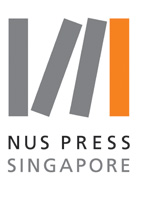National University of Singapore Press
Reconstructing God
Style, Hydraulics, Political Power and Angkor’s West Mebon Visnu
9789813250536
Distributed for National University of Singapore Press
Reconstructing God
Style, Hydraulics, Political Power and Angkor’s West Mebon Visnu
A fully illustrated archaeological and art historical analysis of one of the most important artworks of Angkor, rewriting the chronology of the royal capital.
In December 1936, a villager was led by a dream to the ruins of the West Mebon shrine in Angkor where he uncovered remains of a bronze sculpture. This was the West Mebon Visnu, the largest bronze remaining from pre-modern Southeast Asia, and a work of great artistic, historical, and political significance. Prominently placed in an island temple in the middle of the vast artificial reservoir, the West Mebon Visnu sculpture was an important focal point of the Angkorian hydraulic network. Interpretations of the statue, its setting, date, and role have remained largely unchanged since the 1960s—until now. Integrating the latest archaeological and historical work on Angkor, extensive art historical analysis of the figure of Visnu Anantasayin in Hindu-Buddhist art across the region, and a detailed digital reconstruction of the sculpture and its setting, Marnie Feneley brings new light to this important piece. Highly illustrated, the book will be of interest to art historians and curators, historians of Southeast Asia, and anyone curious about the art and history of Angkor.
In December 1936, a villager was led by a dream to the ruins of the West Mebon shrine in Angkor where he uncovered remains of a bronze sculpture. This was the West Mebon Visnu, the largest bronze remaining from pre-modern Southeast Asia, and a work of great artistic, historical, and political significance. Prominently placed in an island temple in the middle of the vast artificial reservoir, the West Mebon Visnu sculpture was an important focal point of the Angkorian hydraulic network. Interpretations of the statue, its setting, date, and role have remained largely unchanged since the 1960s—until now. Integrating the latest archaeological and historical work on Angkor, extensive art historical analysis of the figure of Visnu Anantasayin in Hindu-Buddhist art across the region, and a detailed digital reconstruction of the sculpture and its setting, Marnie Feneley brings new light to this important piece. Highly illustrated, the book will be of interest to art historians and curators, historians of Southeast Asia, and anyone curious about the art and history of Angkor.
368 pages | 163 colour illustrations, 47 b/w illustrations | 7 1/4 x 9 1/4 | © 2022
Religion: South and East Asian Religions
Reviews
Table of Contents
Introduction
Chapter 1: The West Mebon Visnu
Chapter 2: The Cultural and Religious Development of Cambodia
Chapter 3: The Iconography of Visnu
Chapter 4: The Iconography of Visnu Anantasayin
Chapter 5: The Hydraulic System of Angkor: Gods, Nature and Water
Chapter 6: The Archaeology of the West Mebon
Chapter 7: Artefacts, Inscriptions and the History of the West Mebon
Chapter 8: Analysing the West Mebon Visnu
Chapter 9: Political and Religious Context of the West Mebon Visnu
Chapter 10: Bronze Sculptures of the Mahidharapura Dynasty
Chapter 11: Appraising the date of the West Mebon Visnu
Chapter 1: The West Mebon Visnu
Chapter 2: The Cultural and Religious Development of Cambodia
Chapter 3: The Iconography of Visnu
Chapter 4: The Iconography of Visnu Anantasayin
Chapter 5: The Hydraulic System of Angkor: Gods, Nature and Water
Chapter 6: The Archaeology of the West Mebon
Chapter 7: Artefacts, Inscriptions and the History of the West Mebon
Chapter 8: Analysing the West Mebon Visnu
Chapter 9: Political and Religious Context of the West Mebon Visnu
Chapter 10: Bronze Sculptures of the Mahidharapura Dynasty
Chapter 11: Appraising the date of the West Mebon Visnu

